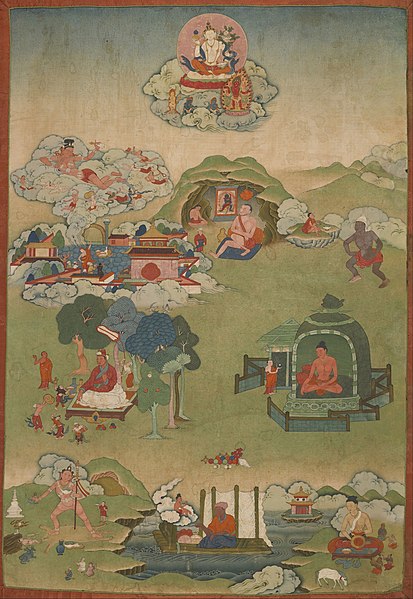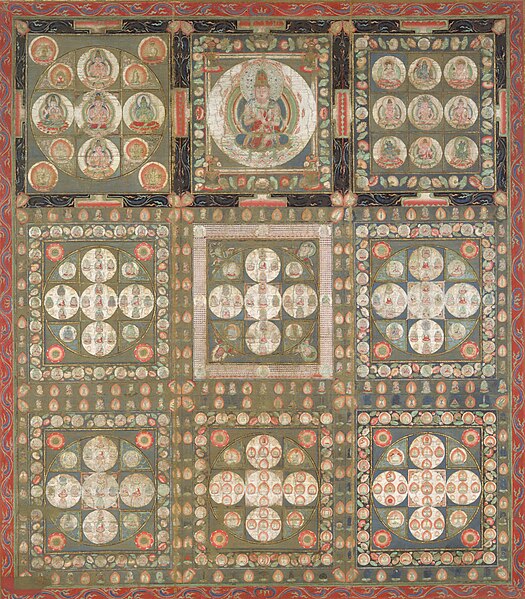A ganacakra is also known as tsok, ganapuja, cakrapuja or ganacakrapuja. It is a generic term for various tantric assemblies or feasts, in which practitioners meet to chant mantra, enact mudra, make votive offerings and practice various tantric rituals as part of a sādhanā, or spiritual practice. The ganachakra often comprises a sacramental meal and festivities such as dancing, spirit possession, and trance; the feast generally consisting of materials that were considered forbidden or taboo in medieval India like meat, fish, and wine. As a tantric practice, forms of gaṇacakra are practiced today in Hinduism, Bön and Vajrayāna Buddhism.
Ganachakra, Nurpur, Himachal Pradesh, India, c. 1790
Vajrayāna, also known as Mantrayāna, Mantranāya, Guhyamantrayāna, Tantrayāna, Tantric Buddhism, and Esoteric Buddhism, is a Buddhist tradition of tantric practice that developed in the Indian subcontinent and spread to Tibet, Nepal, other Himalayan states, East Asia, and Mongolia.
A vajra and bell (ghanta), which are classic ritual symbols of Vajrayāna
Mahasiddhas, Palpung monastery. Note the figure of the great adept Putalipa at center, seated in a cave and gazing at an image of the meditational deity Samvara and the figure at the bottom left holding a skull-staff (khaṭvāṅga) and a flaying knife (kartika).
Diamond Realm mandala, based on the tantric Vajrasekhara Sutra, and symbolizing the final realization of Vairocana Buddha in Shingon
Naked tantrikas dancing and eating from skull cups (kapalas), closeup of a Chakrasamvara mandala





